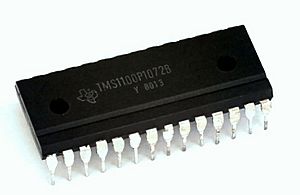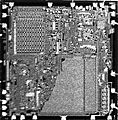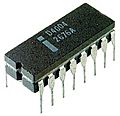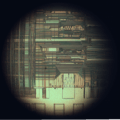Microprocessor facts for kids
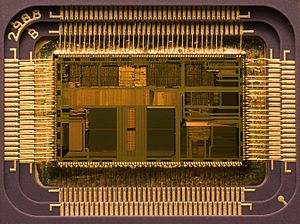
A microprocessor is a tiny electronic part that helps a computer do its work. Think of it as the computer's brain! It's a special kind of central processing unit (CPU) built onto a single integrated circuit chip. This chip holds millions of very small pieces, like transistors, resistors, and diodes, all working together.
Some older microprocessors from the 1900s needed several chips. Today, microprocessors do everything from controlling elevators to helping you search the web. Every action a computer takes is based on instructions from computer programs. Microprocessors carry out these instructions millions of times every second!
Microprocessors were first made in the 1970s for use in embedded systems. These are computers hidden inside other devices. Most microprocessors are still used this way, in things like mobile phones, cars, and home appliances. Some are so small and cheap that they control simple products like flashlights or musical greeting cards. A few very powerful microprocessors are used in personal computers.
Contents
How Microprocessors Work
Microprocessors work by following three main steps: Fetch, Decode, and Execute.
Fetching Instructions
In the Fetch step, the microprocessor copies an instruction from the computer's computer memory. Think of it like grabbing a recipe step from a cookbook.
Decoding Instructions
Next, in the Decode step, the microprocessor figures out what the instruction means. It's like reading the recipe step and understanding what you need to do.
Executing Instructions
Finally, in the Execute step, the microprocessor performs the action the instruction asked for. This is like actually doing the cooking step! Different computers can have different sets of instructions they understand.
Cool Facts About Microprocessors
- Transistors inside a microprocessor can be super tiny, less than one micrometer wide. That's one-millionth of a meter! To compare, a single human hair is over 100 micrometers wide.
- Most of these tiny transistors are a type called MOSFETs.
- Microprocessors are made from materials like silicon, quartz, metals, and other chemicals.
- It takes about two months to make a single microprocessor from start to finish.
- Microprocessors are grouped by the size of their data bus or address bus. They are also put into types called CISC and RISC, which are different ways they handle instructions.
A Quick Look at Microprocessor History
- 1823: Baron Jöns Jacob Berzelius discovers silicon (Si). Silicon is now a key material for electronics.
- 1903: Nikola Tesla patents electrical logic circuits, which he called "gates" or "switches."
- 1947: John Bardeen, Walter Brattain, and William Shockley invent the first transistor at Bell Laboratories.
- 1956: These three scientists win the Nobel Prize in physics for their work on the transistor.
- 1958: The first integrated circuits are created by Robert Noyce and Jack Kilby.
- 1960: IBM builds the first factory to mass-produce transistors automatically in New York.
- 1971: The Intel 4004 becomes the first microprocessor available for people to buy.
See also
 In Spanish: Microprocesador para niños
In Spanish: Microprocesador para niños
Images for kids
-
The 4004 with its cover off (left) and how it looked when used (right)


